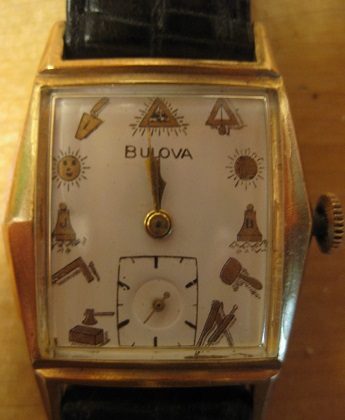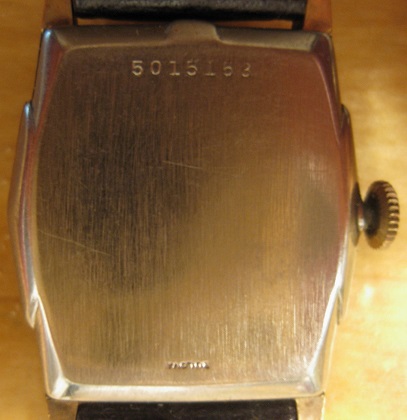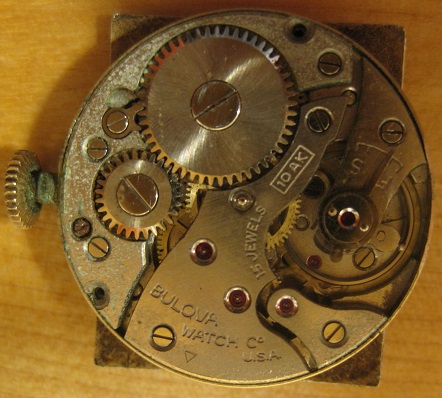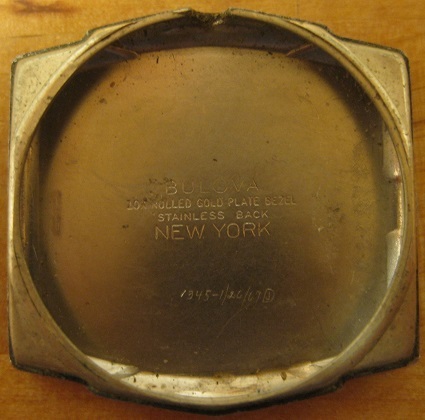Dial with masonic symbols





Ok, So the deal is, Bulova would sell the Masonic versions of these watches upon request, all you had to do was pick the watch you liked, and Bulova did it with various Masonic dials, from the simple logo to hour markers as Masonic jewels.
Mostly the watches were dress style, with clean dials so as to make for dignified and clearly legible versions. They do this now, and have done it almost from day 1, although I can only get confirmation back to the 30's. Pocket watches were a big market for this originally.
I guess this comes under the heading of special editions? What it basically means is, the watch, in this case, an Andrew, was ordered for a brother specifically or supplied to individual lodges in groups. It was ordered by its original name, before dial customisation.
Today, there is no minimum amount to order so this is very user friendly.
If I might make a suggestion, if we take a page out of Cooksey's Watch Guide, we need only ID this watch as:
"Andrew, with Masonic dial"
This aligns the ID with other common special edition or custom watches, like watches with signatures or 1/4 century motifs, etc.
Rev's last few comments make me think a good way to ID these could be:
Model Name Andrew, variant field Masonic.
This is real close to "Andrew, with Masonic dial"
This was what Geoff suggested earlier. It's easy to do, as the variant field exists. I'd probably give two ticks tentative.
If we found a Masonic Dial watch (which otherwise appeared as original) in a case which has two different model names based on the jewel count (or mount, etc...) we can cross that road when we get to it.
It's starting to sound like Bulova gave the option for several models to have dial substituted to Masonic Dial, and probably did not give them a unique model name based on this option. They may have also made a bunch of them in "one run", and had them ready for those who wanted this option.
Being a niche market, if there were ads, I would expect them to be in third party pubs, like the local newspaper ads- similar to this one we have in the "1940's decades ads" threads. Maybe some mid-west town had a large population of Masons, therefore making a niche ad economically viable by local newspaper.
